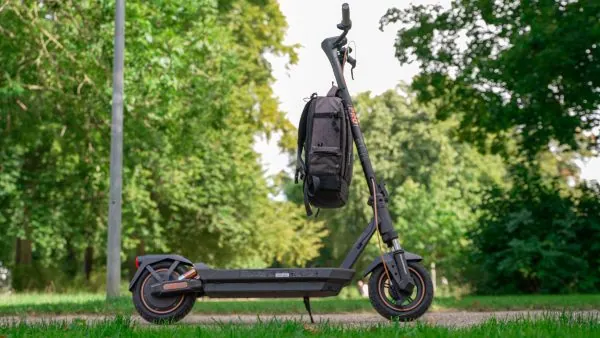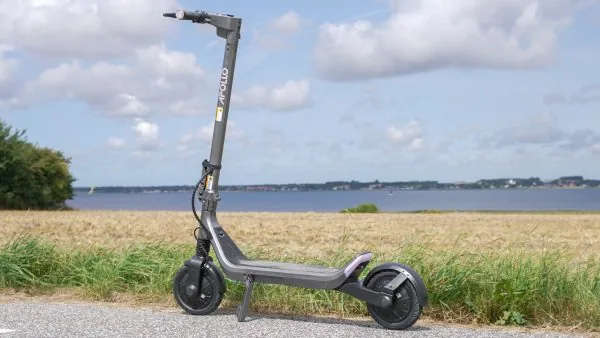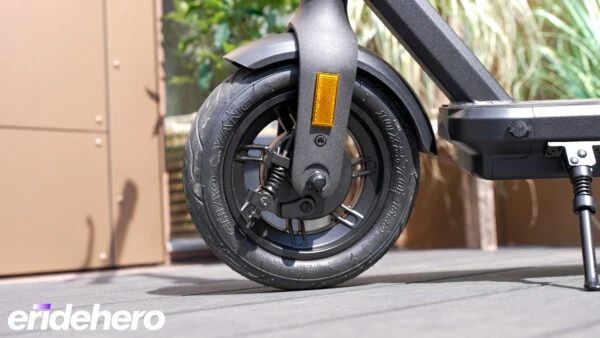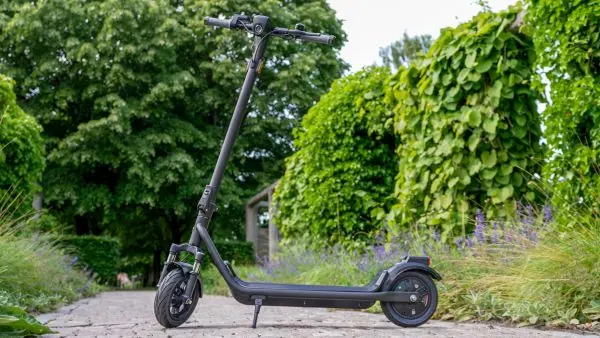The Ultimate Guide to Electric Scooter Batteries
Everything you need to know about electric scooter batteries.

Your electric scooter's battery is the heart of your ride, and it typically represents 30-50% of your scooter's total cost.
Understanding how it works and how to care for it can mean the difference between years of reliable performance and an expensive paperweight. This guide breaks down everything you need to know, without the engineering degree.
Understanding Battery Basics
What Makes Your Scooter Go?
At its core, a battery is simply a device that converts stored chemical energy into electrical energy. Think of it as a rechargeable fuel tank, but instead of gasoline, it stores electrons that flow to your motor when you hit the throttle.
Modern electric scooters predominantly use lithium-ion (Li-ion) batteries—the same technology in your smartphone, just bigger. These have replaced older lead-acid batteries (think car batteries) because they're lighter, last longer, and pack more punch per pound.
Key Terms You Actually Need to Know
- Voltage (V): This is your scooter's "electrical pressure." Most scooters run on 24V, 36V, 48V, or 60V systems. Higher voltage generally means more speed and power.
- Capacity (Ah): Measured in amp-hours, this is your battery's fuel tank size. A 10Ah battery can theoretically deliver 10 amps for one hour, or 1 amp for 10 hours.
- Watt-hours (Wh): The real measure of how far you'll go. Calculate it by multiplying voltage times capacity (V × Ah). A 48V, 15Ah battery gives you 720Wh of energy.
- Cycles: One full discharge and recharge equals one cycle. Most quality Li-ion batteries are rated for 500-1000 cycles before dropping to 80% of original capacity.
Inside Your Battery Pack

Your scooter's battery isn't one big cell—it's dozens of smaller cylindrical cells (usually 18650 or 21700 size) wired together. The individual cells are arranged in series to increase voltage and in parallel to increase capacity. A "13S4P" configuration, for example, means 13 cell groups in series, with 4 cells in parallel per group.
Inside every battery pack is a Battery Management System (BMS). This circuit board adds a layer of safety. It prevents overcharging, over-discharging, overheating, and keeps the cells balanced.
How To Maximize Battery Life
The 80/20 Rule
The single most important rule for battery longevity: avoid extremes. Charging to only 80% and avoiding discharge below 20% can greatly increase your battery's lifespan. Yes, you sacrifice some range, but your battery will thank you with years of extra service. Save 100% charges for when you really need maximum range.
Charging Best Practices
- Use the right charger: Always use the charger that came with your scooter or an exact replacement. Wrong voltage = dead battery (or worse).
- Charge at room temperature: Charging a cold battery can cause permanent damage. Let it warm up first.
- Don't charge immediately after riding: Give your battery 15-30 minutes to cool down.
- Avoid fast charging daily: If your scooter supports fast charging, save it for when you need it. Slower charging is gentler on cells.
Storage Guidelines
Not riding for a while? Store your battery at 40-60% charge in a cool, dry place. Lithium batteries slowly self-discharge, so check monthly and top up if needed (if you get to 20%). Never store a fully discharged battery—it may never wake up again.
Why Your Range Falls Short (and What to Do About It)
Manufacturers test range under ideal conditions: lightweight rider, flat ground, perfect temperature, and slow speeds. Reality is different. Here's what actually affects your range:
- Speed: Power consumption increases exponentially with speed. Riding at 15 mph might give you double the range of riding at 25 mph.
- Weight: Every extra pound matters. A 200-pound rider will get significantly less range than a 150-pound rider.
- Terrain: Hills are battery killers. A 10% grade can double or triple power consumption.
- Temperature: Cold weather can reduce range by 20-40%. Batteries produce less power when cold, and you're probably running lights and wearing heavier clothing.
- Riding style: Aggressive acceleration and frequent stops drain batteries faster than steady cruising.
Try my range calculator (based on actual ride data from 50+ models) to get a realistic estimate of the range you can expect.
How to Keep Your Battery Safe
Lithium batteries store tremendous energy in a small space. While generally safe, they demand respect.
Fire Prevention
Battery fires are rare but serious. They're usually caused by:
- Physical damage (drops, punctures)
- Cheap chargers or modifications
- Manufacturing defects
- Extreme overcharging
Prevention tips:
- Inspect your battery once in a while for swelling or visible damage
- Charge in a fire-safe location (not your bedroom)
- Never charge unattended for extended periods
Water and Your Battery
Most scooter batteries are water-resistant, not waterproof. Riding in light rain is usually fine, but avoid:
- Deep puddles that could submerge the battery
- Pressure washing your scooter
- Riding immediately after heavy rain (give seals time to do their job)
Troubleshooting Common Issues
Battery Won't Charge
- Check all connections (charger to wall, charger to scooter)
- Try a different outlet
- Let battery warm to room temperature
- If completely dead, try leaving charger connected for 30 minutes—BMS may need time to "wake up"
Sudden Range Loss
- Could indicate cell imbalance—try a full discharge/recharge cycle
- Check tire pressure (low pressure = more work for battery equals lower range)
- Consider battery age—capacity naturally decreases over time
- Cold weather? This is normal—range will return in warmer temps
When to Replace
Your battery needs replacement when:
- Range drops below 60% of original despite proper care
- Charging takes significantly longer than when new
- Battery gets unusually hot during use or charging (a bit of heat is normal)
- Physical damage or swelling is visible
- Error codes persist after troubleshooting
The Future of E-Scooter Batteries is Bright
Battery technology is advancing rapidly. Solid-state batteries promise 2-3x the energy density with improved safety. Silicon anodes could increase capacity by 50%. Fast-charging technology that doesn't degrade batteries is on the way. Today's scooters are good—tomorrow's will be incredible.
Final Thoughts
Your battery doesn't need babying, but it rewards good care with years of reliable service. Follow the 80/20 rule, avoid temperature extremes, use quality chargers, and stay alert for problems. With these basics, you'll maximize both daily performance and long-term value from your scooter's most important component.
Remember: a well-maintained battery isn't just about saving money—it's about having confidence that your scooter will get you where you need to go, every single ride.









